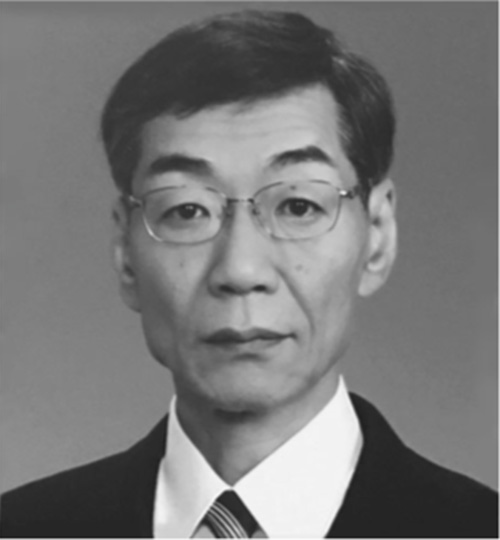 Dr. Suzuki received his Ph.D. from the Graduate School of Electronic Engineering, Hokkaido University and joined then Kokusai Denshin Denwa Co., Ltd. (now KDDI Corporation) in 1984. He successively became an executive officer of KDDI R&D Laboratories in 2002, an R&D fellow of KDDI Corporation in 2007, and executive vice president of KDDI R&D Laboratories in 2011. Since 2017, he has been a principal research engineer with KDDI Research.
Dr. Suzuki received his Ph.D. from the Graduate School of Electronic Engineering, Hokkaido University and joined then Kokusai Denshin Denwa Co., Ltd. (now KDDI Corporation) in 1984. He successively became an executive officer of KDDI R&D Laboratories in 2002, an R&D fellow of KDDI Corporation in 2007, and executive vice president of KDDI R&D Laboratories in 2011. Since 2017, he has been a principal research engineer with KDDI Research.Dr. Suzuki has been engaged in R&D across the whole spectrum of optical communication technology, from high-speed optical devices through high-capacity photonic networks, and he has recorded outstanding achievements in relation to development of the optical communication field.
In the optical device field, he has worked on every aspect of R&D, from trailblazing basic research through commercial development. He was the first to achieve high-speed operation of a semiconductor electroabsorption (EA) optical modulator and to develop a monolithically integrated DFB laser with EA modulator and a soliton light source using EA modulator. Then, he commercially applied these devices to optical submarine cable systems, opening the way for global use of integrated light sources that we see today.
In the field of optical communication systems, he invented, and verified the feasibility of, a unique dispersion management technology that enables high-capacity, long-distance optical communication. This attracted worldwide interest as a groundbreaking technology that extends the transmission distance of high-speed optical signals to more than 10,000 km, or 10 times further than is possible with conventional technology. His paper was the most cited among all papers written by Japanese researchers in the optical communication field at that time and it changed the face of research on long-distance optical fiber communication thereafter. In addition, he developed dispersion management technology for wavelength-division multiplexing systems by taking the fiber nonlinearity into consideration. It raised both the bit rate per wavelength and the number of multiplexed wavelengths, making 1-Tbit/s transoceanic optical transmission possible for the first time. It was commercially deployed in a large number of optical submarine cable systems that were installed in the 2000s, including transpacific, transatlantic and Asia regional cable systems such as Japan-US cable system. Thus, he has made a tremendous contribution to the implementation of global high-capacity communication infrastructures.
As part of his work on network technology for integrated control of IP and optical network, he demonstrated the feasibility of high-speed wavelength-by-wavelength recovery of a fault. This was followed by his achievement of nationwide inter-domain connections in the R&D network of the Ministry of Internal Affairs and Communications. These represent his contributions to development of the photonic network field.
In addition to the above-mentioned achievements, which had tremendous impacts on both academia and industry, Dr. Suzuki has devoted efforts to global penetration of space-division-multiplexing and other technologies originating in Japan, and to development of IEICE activities by serving in several positions. They include chair of the Technical Committee on Optical Communication Systems (OCS), chair of the Technical Committee on Extremely Advanced Optical Transmission Technologies (EXAT), and chair of IEICE-sponsored international conferences, such as the Opto-Electronics and Communications Conference (OECC) and the EXAT International Symposium. He has contributed to fostering the development of researchers through his IEICE activities and through his leadership of a project that achieved the worldfs first optical transmission at 10 Pbit/s. In addition, he has contributed to development of the electronics, information and communication field by serving in a number of important public offices, including as a member of the 21st Century Network Core Technology Research Promotion Committee.
For his achievements, Dr. Suzuki has received the Ministerfs Award in Science and Technology from the Ministry of Education, Culture, Sports, Science and Technology, the Ministerfs Award in Advanced Technology from the Ministry of Economy, Trade and Industry, the Kenjiro Sakurai Memorial Prize from the Optoelectronics Industry and Technology Development Association, the Hisoka Maejima Award from the Tsushinbunka Association, Ichimura Industry Prize from Ichimura Foundation for New Technology, the Best Paper Award and the Achievement Award from the IEICE, and a Medal with Purple Ribbon (2017). Dr. Suzuki is given a title of Fellow from IEICE, IEEE and The Optical Society (OSA).
As described above, his contributions to development of the optical communication field and to the electronics, information and communication field have been outstanding, and we are convinced that he fully deserves to be a recipient of the Distinguished Achievement and Contributions Award.